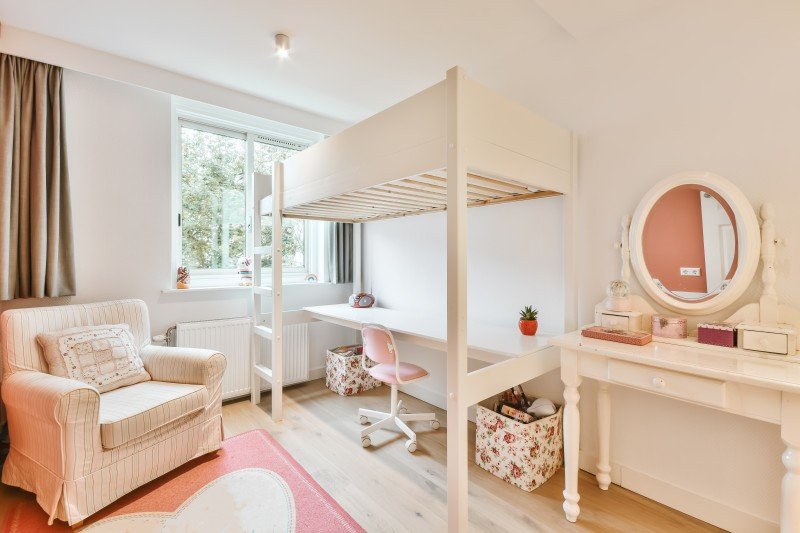Who Is Responsible For An Bunk Bed Budget? 12 Top Notch Ways To Spend Your Money
A Comprehensive Guide to Children's Bunk Beds: Styles, Benefits, and Safety Considerations
Bunk beds have ended up being a popular choice for households seeking to maximize space and provide an enjoyable sleeping environment for kids. With their unique style, they offer an innovative and useful option for shared bed rooms, playrooms, and even guest lodging. This short article explores the different styles of kids's bunk beds, their advantages, safety considerations, and addresses some often asked concerns.
The Allure of Bunk Beds
Children's bunk beds are more than just space-saving structures; they are likewise a gateway to daring dreams and creative play. Below is a detailed examination of their many benefits.
Benefits of Bunk Beds
- Space-Saving: Bunk beds effectively utilize vertical space, making them a perfect option for smaller sized spaces.
- Playful Design: Many bunk bed styles consist of slides, camping tents, and themed aspects, sparking creativity and excitement.
- Partner Sharing: Bunk beds are best for brother or sisters sharing a room or accommodating pajama parties.
- Flexible Use: Some models can be separated into two specific beds, providing flexibility as children grow.
- Storage Options: Many bunk beds feature integrated drawer storage or racks, even more boosting their functionality.
Styles of Children's Bunk Beds
The range of bunk beds available today deals with different preferences and needs. Below is an introduction of some popular styles.
Design
Description
Best For
Requirement Bunk Bed
A traditional design featuring one bed stacked above another.
Brother or sisters sharing a room.
Loft Bed
Comparable to a bunk bed without the bottom bunk, enables a workspace or play location listed below.
Minimal space for play/desk.
L-Shaped Bunk Bed
Two beds organized in an L-shape, often with additional areas for storage or play.
Special space layouts.
Twin Over Full
A twin bed over a full bed, accommodating different sleep requirements.
Growing kids and teens.
High Sleeper
Stands even greater than a loft bed, generally including a desk or play location below.
Older kids needing more play/desk space.
Tent Bunk Bed
Bunk beds with a canopy or tent-like structure, developing a relaxing, enjoyable space.
Active and imaginative children.
Key Features to Consider
When choosing the ideal bunk bed for kids, the following functions deserve thinking about:
- Material: Bunk beds can be made from wood, metal, or a mix. Bunk Bed For Teens issacdonnelly.top has its special visual and durability.
- Weight Capacity: Always confirm the weight limit of the bunk bed to ensure it can accommodate your kids safely.
- Security Rails: Ensure the leading bunk has tough rails to prevent falls.
- Ladder Security: A properly designed ladder should use simple and safe access to the upper bunk.
- Finishing: Ensure any finishes are non-toxic and safe for kids.
Safety Considerations
Security is paramount when it pertains to children's bunk beds. The following standards ought to be abided by:
- Age Appropriateness: Generally, kids under 6 years old should not sleep in the upper bunk due to security threats.
- Sturdy Construction: Ensure the frame and products are strong and can support the weight without drooping.
- Routine Maintenance: Periodically look for loose screws, bolts, or other parts that may need tightening up.
- Clear Play Area: Keep the area around the bunk bed without toys and obstacles to minimize tripping threats.
Setting Rules for Safe Use
Establishing standards for bunk bed use will assist guarantee safety:
- Limit Jumping and Climbing: Children must be advised against leaping from the leading bunk and climbing on the sides.
- Monitoring Sleepovers: Monitor young visitors while they are utilizing the bunk bed for the very first time.
- Inform on Ladder Use: Teach how to use the ladder securely, stressing the significance of dealing with the ladder when going up or down.
Regularly Asked Questions
1. What age is suitable for a child to sleep in the leading bunk?
Most makers recommend that children should be at least six years of ages to sleep in the upper bunk. This standard is created to mitigate the threat of falls.
2. Can bunk beds be personalized?
Yes, lots of producers provide adjustable options, including colors, products, and extra functions like drawers or desks.
3. Are bunk beds safe for weight?
Bunk beds have weight limitations, usually ranging from 200 to 400 pounds, depending on the design and material. Always examine the manufacturer's specifications.
4. How do I maintain and clean a bunk bed?
Regularly look for loose parts, keep the bed tidy by wiping down surface areas, and make sure the bed linen is fresh to promote a safe and hygienic sleep environment.
5. Can bunk beds be separated into specific beds?
Numerous bunk beds feature an alternative to separate them into 2 individual beds, supplying long-term adaptability.
Kid's bunk beds are more than simple furnishings; they are a practical, versatile, and creative element of a kid's space. With numerous styles offered and numerous security considerations to remember, moms and dads can choose the ideal bed that fits their space, fulfills their kids's requirements, and instills a sense of experience. By comprehending the benefits, designs, and safety procedures associated with bunk beds, families can produce a delightful and safe and secure sleeping environment for their children. Whether for brother or sisters sharing a room or space-saving solutions, bunk beds remain a cherished option for many families.
